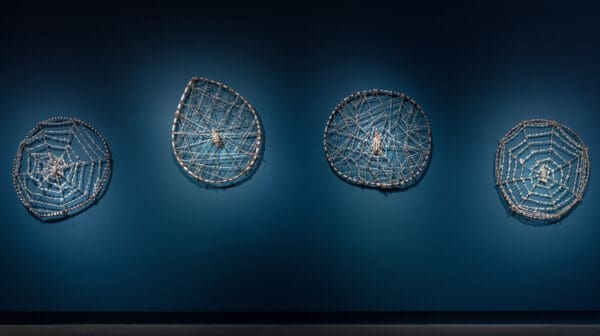
Piercing the veil
A new exhibition at Buxton Contemporary finds a rich complexity in the shadowy terrain between life and death.
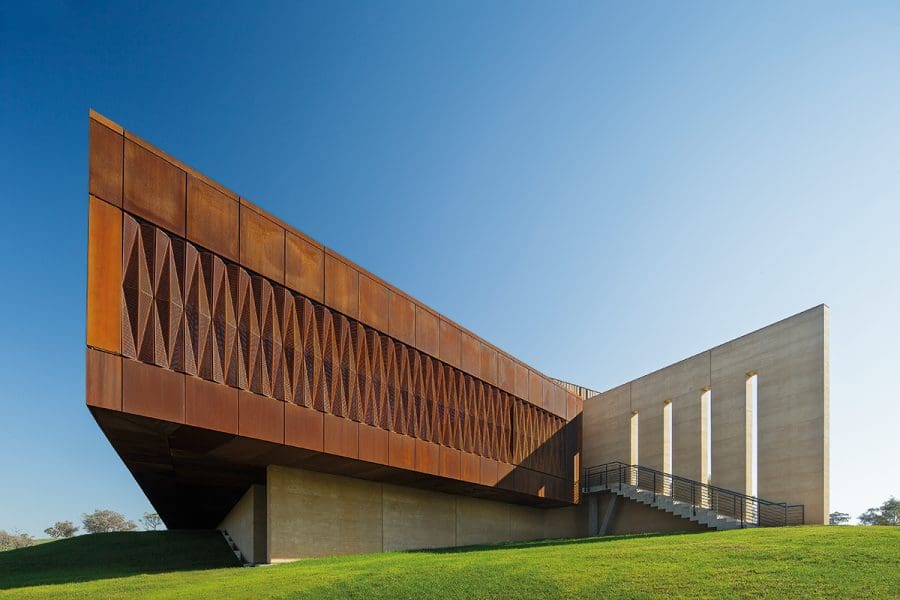
Garangula Gallery. Photographed by John Gollings.
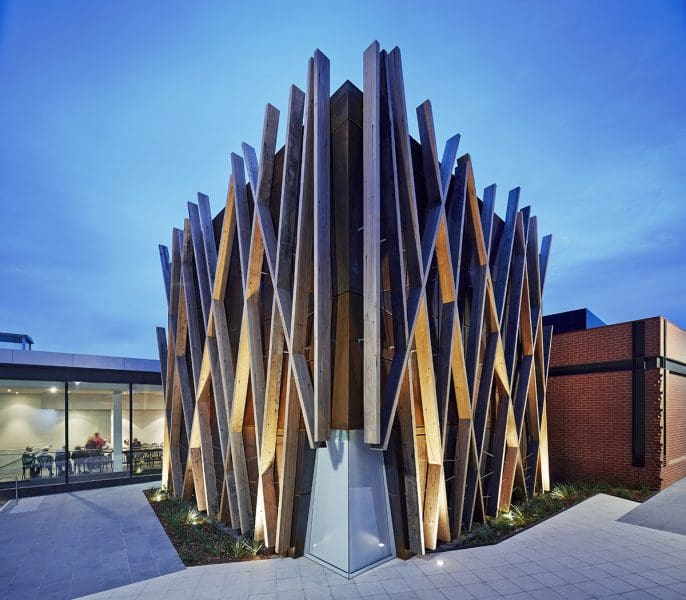
Bendigo Art Gallery. Photographed by Peter Clarke.
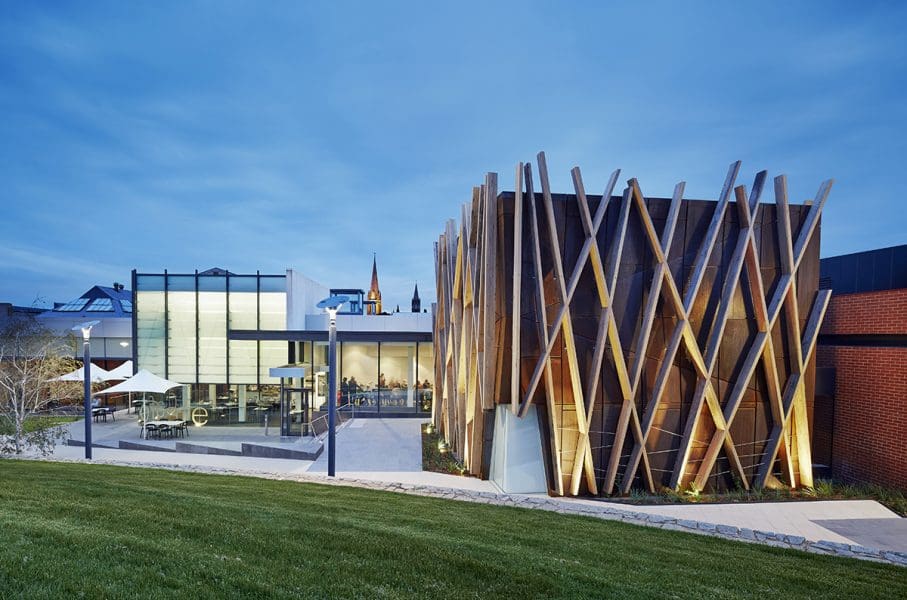
Bendigo Art Gallery. Photographed by Peter Clarke.
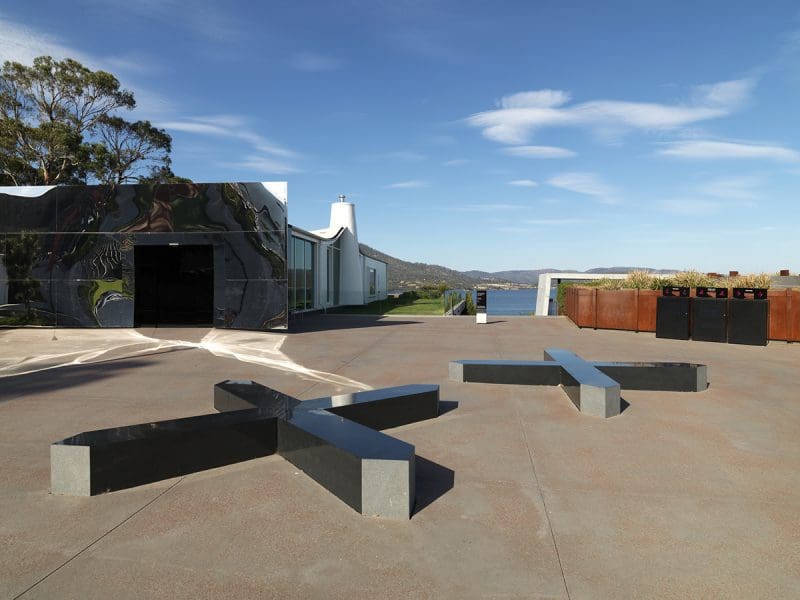
Moorilla Gallery, the museum plaza and mirrored entrance. Original house designed by Sir Roy Grounds. The entrance to the Museum of Old and New Art. Mona logo detail in granite. Photograph credit: Mona and Rémi Chauvin. Image courtesy of Mona, Museum of Old and New Art, Hobart, Tasmania, Australia.
“We aren’t theorists,” says Karl Fender, one pillar of Fender Katsalidis architects, the empire that has wrought so much architectural splendour across Australia in recent decades. “We are working architects.” No pretentions: Fender and Nonda Katsalidis are all about getting down to business to make architecture that works.
Including Eureka Tower (2006), Republic Tower (1999), NewActon Nishi (2013), Melbourne Terrace (1994) and the coming 2020 projects Australia 108 (taller than Eureka) and Kuala Lumpur’s Merdeka PNB118 (taller than almost anything), their impressive, continuing list is a hall of fame.
The new book that surveys the diverse accomplishments of these long-term business partners is called, simply, Fender Katsalidis: Working Architecture, bringing into focus the extraordinary array of buildings they (and occasional associates such as Rob Mirams) have designed, beginning with the famed St Andrew’s Beach House (1992). Many of the 33 featured buildings have been either made for art – David Walsh’s Mona, the Bendigo Art Gallery, the Ian Potter Museum of Art or the Garangula Gallery — incorporate major public art, or are essentially marvellous artworks in themselves.
Kastalidis has unexpectedly dashed off for a meeting in Sydney, so Fender is cautious talking about work such as Mona that Katsalidis has been primarily responsible for. Yet Fender makes it clear that with such projects, owners/gallery directors are integral: a building’s personality emerges through these people’s aspirations. With clients such as Walsh, it is a genuine collaboration, “an enormous amount of progressive sitting down, producing concepts and then working through to push, test and improve”. The building might not be the point: the collection is the focus.
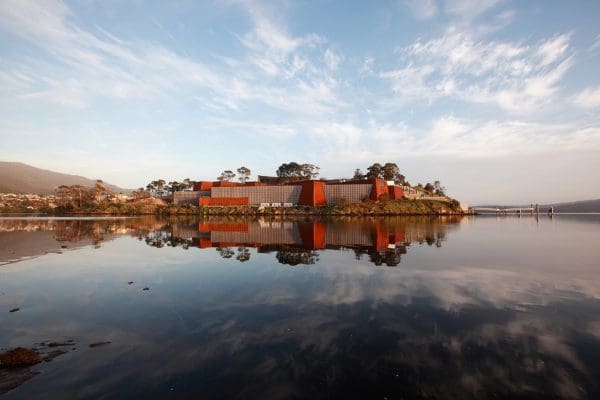
In other work, such as Garangula Gallery in New South Wales, owned by a Swiss currency trader, it was less organic and more about taking a specific brief — in this case, the simple direction of “100 artworks, 100 people for dinner”. The idea with Garangula was to carefully display 100 works of Indigenous art but also make the place a sort of banquet hall for the owner when he holds grand dinners. “So the Indigenous art is contained within chambers, almost like caves,” Fender explains, doing a sketch. “But it was designed so that the walls could turn and make this big space down the middle, like a baronial hall.” The walls pivot and the art moves from being contained in intimate, calm spaces, to face out to the 100 guests. As well, collaborator Mirams worked with artist Jonathan Jones of the local Wiradjuri people to shape some of the external architectural content of the building — animating a water feature near the sculpture courtyard, a corten steel screen and a rammed earth facade.
Likewise, the Bendigo Art Gallery comes to life as Fender illustrates the extraordinary and long-term organic development of the site, beginning with $4.9m of additions over three separate incursions, plus the most recent creation of a new gallery and storage site finished in 2014, with more possibly to come. Beginning with working on three heritage spaces and a site next door occupied by a 1960s motel, the site now has a well-known glassed-in sculpture gallery at the rear, an inviting gateway at the front, and a new exhibition space at the rear that has a central cube-shaped interior that is slightly pivoted to form interesting spaces around it. “Part of the charm of Bendigo Gallery is that it was organic, it just grew and grew,” Fender says. He’s not surprised visitor numbers have skyrocketed since the first addition, under director Tony Ellwood in 1997, to Karen Quinlan’s continuing long-term reign.
In other projects, art has emerged via the ventilation shaft that became an art space at Republic Tower, the heroic classical pillars by Peter Corlett at Melbourne Terrace, and the postmodern façade by Christine O’Loughlin at the Ian Potter Museum of Art, and all have become embedded in the urban fabric. “Sometimes out of those sorts of restrictions [the ventilation shaft] come great opportunities. These things become part of the legend of the city.”
Fender and Katsalidis inadvertently created another such legend at Eureka Tower, which Fender describes as “almost public art”, especially with the whimsy of the red stripe at the top. (“Buildings don’t have to finish with a bloody mast!” he huffs.) ‘”People started saying ‘What’s the red thing?’ and the legend started that it is the blood spilt at the gold rush.”
And who started that myth? Fender smiles, a tricky flash in his eye. “We did.”
Fender Katsalidis: Working Architecture, published by Uro Publications 2017, includes contributions from Leon van Schaik, Graeme Gunn and Peter Wilson.